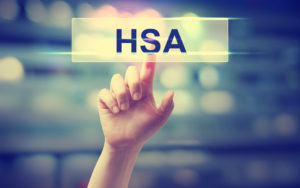The HSA: An Uncovered Opportunity for Millennials (and Others Struggling to Pay Healthcare Costs)
By: James Thompson, Product Manager for Ascensus
As a millennial, I can give you a long list of reasons why I donât think I have enough money to set aside for lifeâs biggest moments, especially when it comes to healthcare. In fact, most millennials will tell you that they canât afford to save while acknowledging that they canât afford not to save. Millennials seem to understand better than the generation before them how important it is to set aside money. Itâs just that they donât think they are capable of saving enough.
So how can millennialsâor anyone struggling to saveâsave enough to combat healthcare costs? Well, if they are eligible, by taking advantage of the triple tax benefits of owning a health savings account (HSA): tax deduction, tax-deferred earnings, and tax-free distributions (if eligible). These tax benefits allow HSA owners to transform their previously taxable money into completely tax-free money. This is a perfectly legal way to avoid taxation on once taxable moneyâall the way around.
These tax benefits exist because the money in an HSA is intended to pay for medical expenses incurred by the HSA owner or the HSA ownerâs dependents. But itâs not a matter of using the HSA in case you incur medical expenses; itâs a matter of using the HSA when you incur medical expenses. Thatâs where the tax advantages really come into play.
Consider the millennial HSA owner who becomes injured playing Frisbee golf or (insert other millennial-friendly activity here) and has to be seen by a doctor or is hospitalized. That innocent recreational activity resulting in a trip to the doctor may cost the individual hundreds, if not thousands, of dollars.
The beauty of the HSA is that before paying any medical bills âout-of-pocketâ, the HSA owner can put that payment amount in his HSA (being careful not to exceed the annual contribution limit) and receive a tax deduction for the contribution. The tax deduction is like receiving a discount on his medical bills. For instance, someone in the 25 percent tax bracket essentially is receiving a 25 percent discount on his medical bills by contributing to, or running his money through, the HSA first.
Keep in mind that an HSA owner doesnât have to put in the total amount of all her medical bills. Many people donât realize that, if eligible, they can contribute as little or as much as they want to an HSA (up to the statutory limit) as they are able to or on an as-needed basis. There is no federal minimum balance requirement to maintain an HSA so making several small contributions over time may be a viable option for those who feel they cannot set aside much money at one time. For example, an individual who qualifies for the full HSA family contribution amount ($6,750 for 2016) whose medical bills total $6,000 may choose to contribute a more affordable amount, such as $200, in several deposits over time, adding up to $6,000, rather than contribute $6,000 to her HSA in one deposit. In the meantime, the longer these contributions remain in the account, the greater the potential for tax-deferred earnings.
Whenever the HSA owner is ready, he can withdraw from the HSA the amounts contributed to either reimburse himself or pay the healthcare provider directly for medical expenses. And as long as the distributed amount equals his qualified medical expenses, he will not have to pay taxes on the HSA distribution.
Millennial or not, with all of the tax advantages HSAs offer, those who are eligible to make contributions will likely find it worthwhile to build up a healthy HSA balance, as medical expenses often are inevitable, even for young, healthy individuals.
As for those HSA-eligible individuals who believe that they canât afford an HSA, it is still worth opening one with a minimal balance and adding to it as qualified medical expenses occur. These individuals might as well take advantage of the tax breaks of the HSA (taking into consideration the contribution limit and any previously contributed amounts for the year) before handing it over to the healthcare provider. After all, paying the expense out-of-pocket when eligible for an HSA contribution is like throwing money away.
 Ascensus is the NAFCU Services Preferred Partner for IRA, Retirement Plan, and Health Savings Account (HSA) Solutions Software, Training, Documents and Consulting. More educational resources can be found at www.nafcu.org/ascensus.
Ascensus is the NAFCU Services Preferred Partner for IRA, Retirement Plan, and Health Savings Account (HSA) Solutions Software, Training, Documents and Consulting. More educational resources can be found at www.nafcu.org/ascensus.
